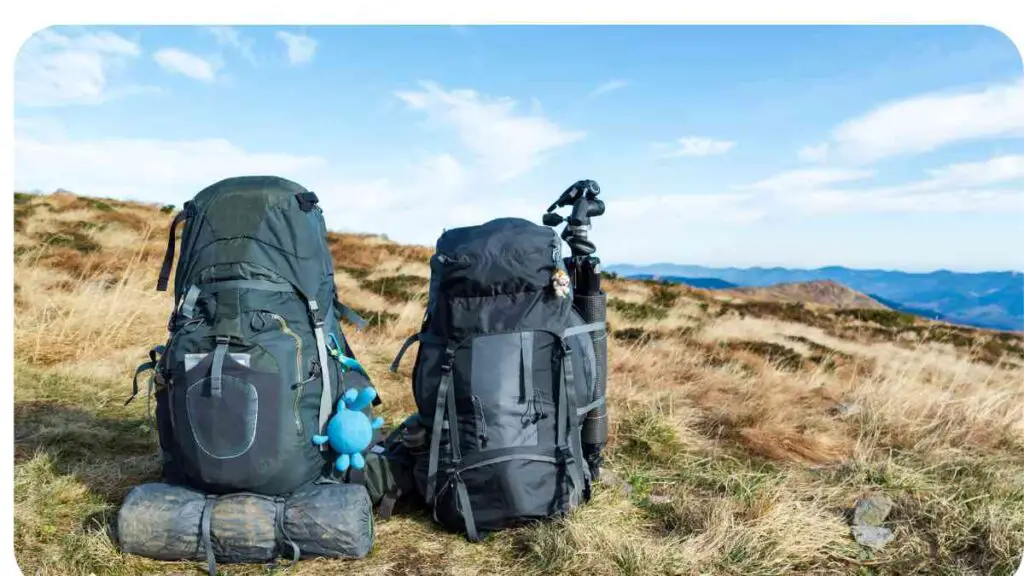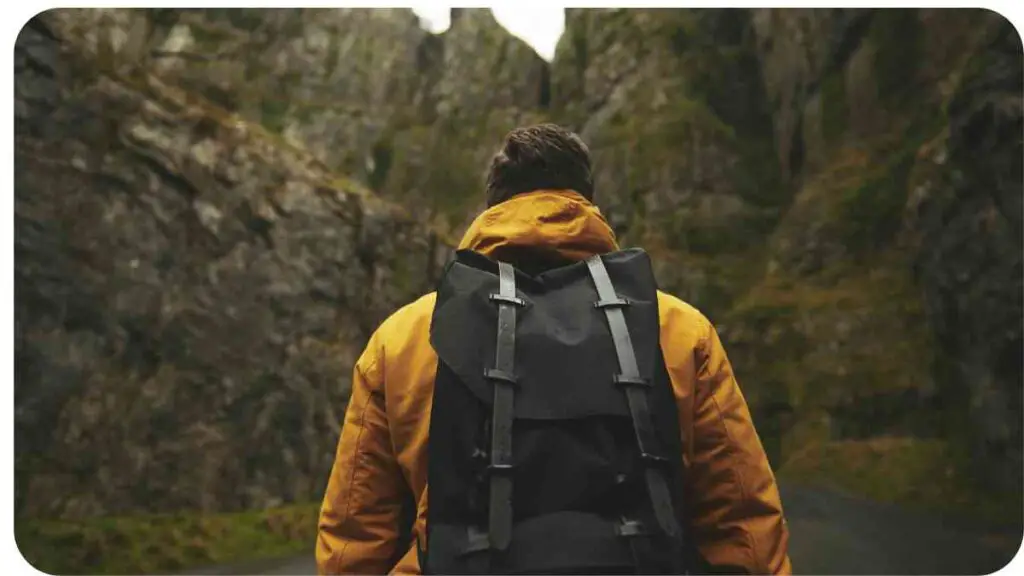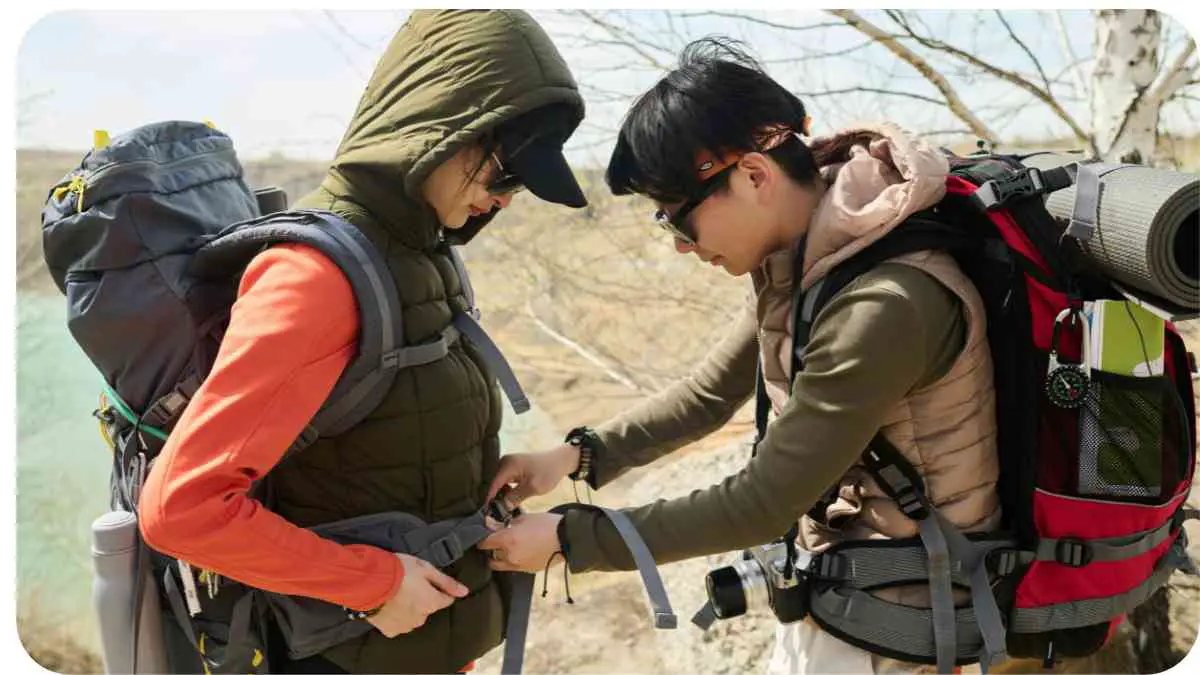Welcome, fellow adventurers, to a guide that unlocks the secret to an unforgettable hiking experience: the perfect fit of your Osprey backpack. Picture this: you’re trekking through rugged terrain, surrounded by nature’s beauty, with a backpack that feels like an extension of your body.
This guide is your key to achieving that level of comfort and confidence. As a seasoned backpacker and outdoor enthusiast, I’m here to share not only the technicalities but also the heart of achieving the ideal fit for your Osprey pack.
| Key Takeaways |
|---|
| 1. A well-fitted backpack enhances comfort and stability, transforming your hiking experience. |
| 2. Key components like shoulder straps, hipbelt, and torso length play a crucial role in achieving the perfect fit. |
| 3. Adjust shoulder straps within the specified range to accommodate your shoulder width. |
| 4. Choose the right hipbelt size to distribute weight and maintain stability. |
| 5. Ensure the recommended torso length for balanced weight distribution. |
| 6. Fine-tune load lifters, sternum strap, and back length for customized fit. |
| 7. Pack strategically for optimal balance and accessibility. |
| 8. Make on-trail adjustments to adapt to changing conditions. |
| 9. Maintain your backpack for longevity and continued comfort. |
| 10. Explore further resources for detailed fitting guidance. |
Understanding the Importance of Backpack Fit
Before we dive into the nitty-gritty, let’s emphasize why backpack fit matters. An ill-fitting backpack can transform a dream adventure into a nightmare of discomfort and strain. A well-fitted backpack, on the other hand, can turn a challenging journey into an enjoyable one. Your backpack is more than a carrier; it’s your companion. It should enhance your experience, not hinder it.
Proper gear care is crucial for extending the life of your outdoor equipment. Just like adjusting a backpack for comfort, knowing how to maintain a sleeping bag is essential for a successful camping experience.
Key Components of an Osprey Backpack

An Osprey backpack is meticulously designed, and its fit is influenced by several critical components:
- Shoulder Straps and Adjustments: These distribute the load and keep the pack in place. They should be snug but not constricting.
- Hipbelt and its Significance: The majority of your pack’s weight should rest on your hips. The hipbelt ensures stability and reduces strain on your shoulders.
- Torso Length and Sizing: Getting the right torso length is essential for comfort and weight distribution. An adjustable harness system helps achieve this.
In the next sections, we’ll explore these components in depth and provide actionable tips for achieving the perfect fit.
The Art of Shoulder Strap Adjustment
Shoulder straps are your backpack’s lifeline, so to speak. Proper adjustment ensures weight distribution and prevents discomfort. Here’s a quick reference table showcasing different Osprey backpack models and their shoulder strap adjustments:
| Osprey Backpack Model | Shoulder Strap Adjustment Range |
| Atmos AG 65 | 15.5″ – 21″ |
| Exos 48 | 16″ – 22″ |
| Kyte 36 | 14″ – 19″ |
It’s important to measure your own shoulder width and adjust accordingly within the given range for optimal comfort.
“Efficiency tips” can apply to more than just coolers. Discover how to maximize your gear’s performance and ensure that your backpack is tailored perfectly for your outdoor adventures.
Achieving Hipbelt Comfort and Stability
Your hips are the powerhouses when it comes to carrying weight. A well-fitted hipbelt ensures stability and prevents your backpack from swaying. Refer to the following table to find the right hipbelt size for different Osprey backpacks:
| Osprey Backpack Model | Hipbelt Size Range |
| Aether AG 70 | 30″ – 40″ |
| Eja 38 | 26″ – 30″ |
| Renn 50 | 28″ – 35″ |
Remember, a snug fit doesn’t mean uncomfortably tight. You should be able to fasten the hipbelt with ease while maintaining stability.
Finding the Right Torso Length
An ill-fitted torso length can lead to discomfort and imbalance. Consult the following table to identify the recommended torso length for various Osprey packs:
| Osprey Backpack Model | Recommended Torso Length |
| Stratos 50 | 16″ – 19″ |
| Ariel AG 55 | 14″ – 17″ |
| Talon 22 | One Size (Adjustable) |
Choosing the correct size ensures that the weight is distributed evenly across your back and shoulders.
Customizing Other Fit Features
While shoulder straps, hipbelts, and torso length are fundamental, don’t overlook other fit features:
- Adjusting Load Lifters and Sternum Strap: These fine-tune the fit and balance of your backpack.
- Modifying the Back Length: Some packs offer back length adjustments to cater to various body shapes.
In the next section, we’ll discuss how to pack your backpack efficiently for optimal balance and comfort.
Properly maintaining your gear is essential. Learn how to keep your tent in top shape, just as you would with your backpack adjustments, ensuring both are ready for your next outdoor journey.
Packing Techniques for Balance and Comfort

Imagine your backpack as a perfectly balanced puzzle. How you pack it affects its stability, weight distribution, and your overall comfort. Here are some packing tips that can transform your hiking experience:
- Heavier Items at the Bottom: Place heavier items closer to your back and at the bottom of your pack. This keeps the center of gravity low and prevents your pack from feeling top-heavy.
- Keep Essentials Accessible: Items you’ll need throughout the day should be easily reachable. Store them in the top lid pocket or hipbelt pockets.
- Use Compression Straps: These help compress your load, preventing items from shifting and maintaining stability.
- Utilize the Sleeping Bag Compartment: If your pack has a bottom compartment, use it for your sleeping bag or other lightweight gear.
- Balanced Weight: Distribute weight evenly from side to side to prevent leaning to one side.
Tips for On-Trail Adjustments
As you hike, your body may change, and conditions might shift. Periodically, make minor adjustments to maintain the perfect fit:
- Reevaluate Strap Tension: Check and adjust your shoulder straps and hipbelt tension to accommodate changes in weight distribution.
- Fine-Tune Load Lifters: These keep your pack close to your body. Adjust them to maintain a snug fit.
- Adapt to Terrain: On steep ascents, loosen your hipbelt slightly to allow for better mobility. Tighten it on descents for stability.
Ensuring a Comfortable and Secure Fit: Real-Life Experiences
During my journeys through rugged landscapes and challenging trails, I’ve learned that your backpack’s fit isn’t just a technical aspect—it’s a deeply personal experience. An Osprey backpack that fits like a glove allows you to immerse yourself in the surroundings without distractions.
Selecting the right gear, including a backpack, is key. Explore tips on choosing the perfect outdoor equipment to complement your backpack adjustments for a seamless adventure.
I remember a particularly steep climb in the Rockies. My Osprey Atmos AG 65 felt like an extension of my body, distributing the weight evenly and allowing me to focus solely on the breathtaking views. That’s the beauty of a well-fitted pack: it becomes a part of your adventure.
Maintenance and Longevity of Your Osprey Backpack
Your journey doesn’t end with achieving the perfect fit. Proper care ensures your Osprey backpack stands the test of time:
- Clean After Every Trip: Remove dirt and debris to prevent damage and prolong the lifespan.
- Store Correctly: Hang your backpack or store it flat to maintain its shape.
- Inspect for Wear and Tear: Regularly check for signs of wear, loose stitches, or fraying straps.
A good night’s sleep is essential while camping. Addressing sleeping pad issues is as important as adjusting your backpack for comfort. Learn how to optimize your sleeping gear for better rest.
Conclusion
Dear adventurers, achieving the perfect fit for your Osprey backpack is a journey in itself. It’s a blend of science, art, and personal connection. With a well-fitted backpack, you’re equipped to take on the world with confidence. As you embark on your next expedition, remember the wisdom of finding balance and comfort, both within your backpack and within yourself. Here’s to unforgettable trails and boundless horizons!
Further Reading
For more in-depth information and guidance on achieving the perfect fit for your Osprey backpack, consider exploring these resources:
- Osprey Size & Fit Guide: Delve into Osprey’s official guide, covering sizing, adjustments, and fit techniques to enhance your backpacking experience.
- How to Fit Your Osprey Backpack: Osprey Europe provides a comprehensive guide with step-by-step instructions, ensuring your backpack fits like a glove.
- Sizing and Fit for Men: Tailored specifically for men, this guide offers insights into achieving optimal comfort and performance.
FAQs
How do I measure my torso length for an Osprey backpack?
To measure your torso length accurately, follow these steps: Stand straight and tilt your chin slightly down. Feel for the bony bump at the base of your neck and locate the bony bump at the small of your back. Have someone measure the distance between these two points.
Can I adjust my backpack while it’s loaded?
Yes, you can make minor adjustments while the backpack is loaded. However, for major adjustments, it’s advisable to unload the pack to achieve the best fit.
What if I fall between two hipbelt sizes?
If you’re between two hipbelt sizes, opt for the larger size. You can always adjust the hipbelt for a snug fit, but a too-small hipbelt can lead to discomfort and inadequate weight distribution.
How often should I check my backpack for wear and tear?
Regularly inspect your backpack for wear and tear after each trip. Look for fraying straps, loose stitches, and any signs of damage. Addressing issues promptly can extend the lifespan of your pack.
Are the fitting techniques the same for different Osprey backpack models?
While the basic principles of fitting remain consistent across Osprey backpacks, each model may have specific adjustments due to its design. Always refer to the product’s fitting guide for accurate instructions.

I’m Hellen James, and I am a camping enthusiast. I’ve been camping since I was a kid and have always loved it the fresh air, the beautiful scenery, and the great outdoors. In fact, it’s one of my favorite things to do in the summer!


